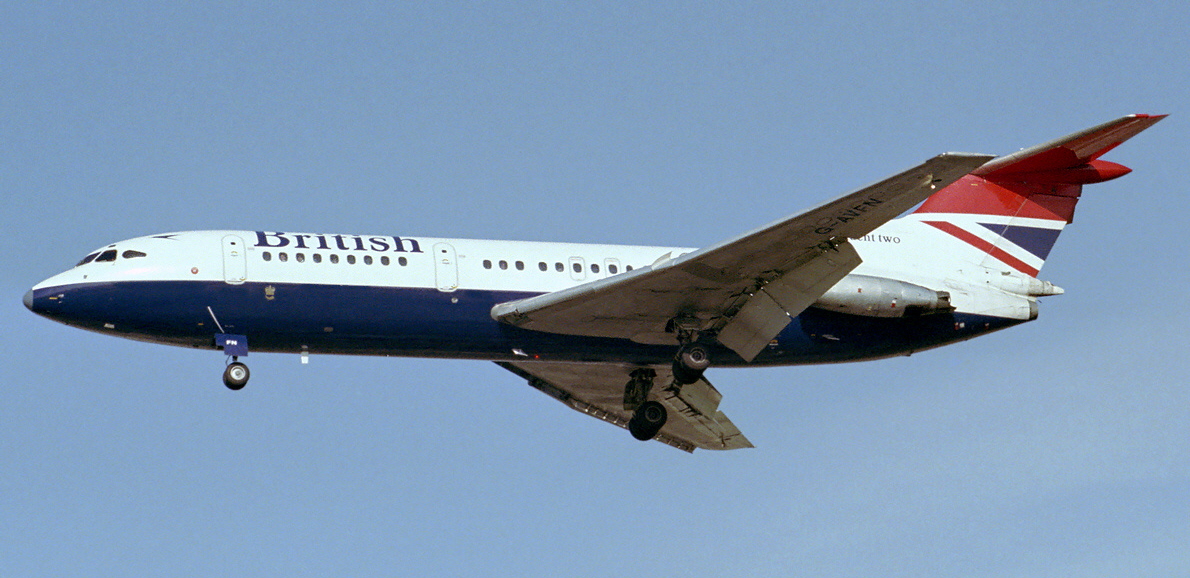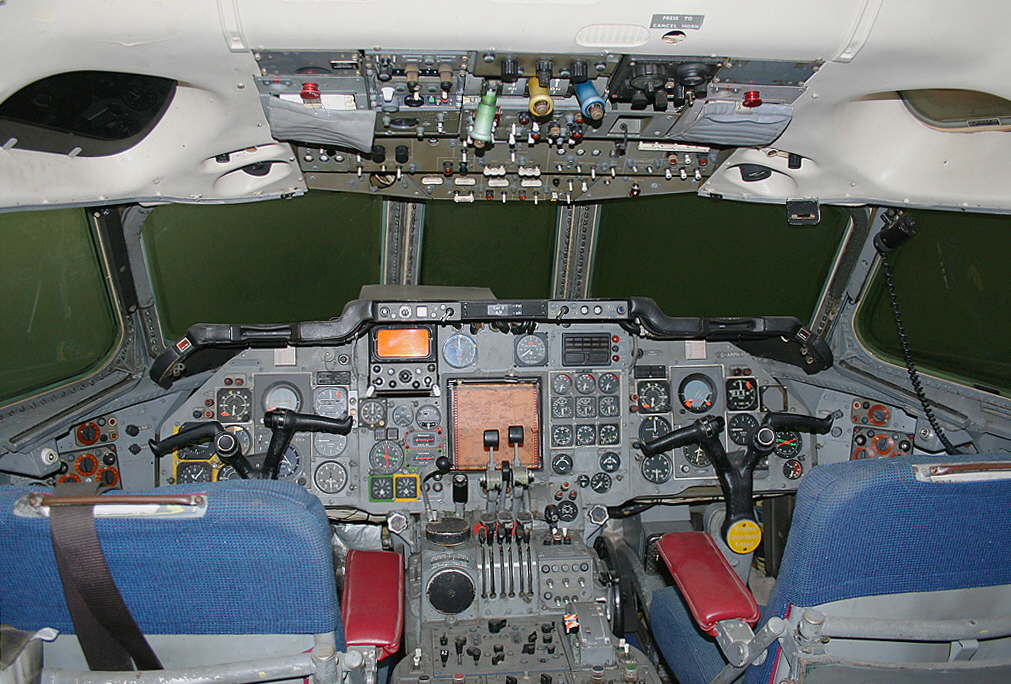 The Hawker Siddeley HS 121 Trident (affectionately called the “Ground Gripper” in British Airways service ) was a short to medium-range three-engined jet airliner designed by de Havilland and built by Hawker Siddeley in the 1960s and 1970s. The
The Hawker Siddeley HS 121 Trident (affectionately called the “Ground Gripper” in British Airways service ) was a short to medium-range three-engined jet airliner designed by de Havilland and built by Hawker Siddeley in the 1960s and 1970s. The
Trident is notable for its pioneering avionics which enabled it to become the first airliner to make a fully automatic approach and landing in revenue service in 1965 and to be the sole airliner capable of automatic landings in regular service from 1966 until versions of the Lockheed TriStar were also cleared to perform them in the mid 1970s.
Designed very tightly around a British European Airways (BEA) specification, the Trident had modest sales, with only ever 117 produced. The Trident was a jet airliner of all-metal construction with a T-tail and a low-mounted wing. It had three rear-mounted engines: two in side-fuselage pods, and the third in the fuselage tail cone, taking air in through an S - shaped duct. All versions were powered by versions of the Rolls-Royce Spey engine. The Trident was one of the fastest subsonic commercial airliners, regularly cruising at over 610 mph. At introduction into service its standard cruise Mach Number was 0.88, probably the highest of any of its contemporaries. Designed for high speed, the wing produced relatively limited lift at lower speeds. This, and the aircraft's low power-to-weight ratio, called for prolonged takeoff runs - hence the nickname “The Ground Gripper”. 
The Trident was routinely able to descend at rates of up to 4500 feet per minute in regular service. In emergency descents it was permissible to use reverse thrust of up to 10,000 rpm. The Trident's first version, the Trident 1C, had the unusual capability of using reverse thrust prior to touchdown. The throttles could be closed in the flare and reverse idle set to open the reverser buckets. At pilot discretion, up to full reverse thrust could then be used prior to touchdown. This was helpful to reduce hydroplaning and give a very short landing run on wet or slippery runways, while preserving wheel brake efficiency and keeping wheel brake temperatures low. In total, 117 Tridents were produced, while the Boeing 727, the Trident’s main competitor and built to the original airline specification for the Trident, sold 1,832 aircraft. The largest operator of the type was BEA. BEA's successor, British Airways retired their Trident fleet in the mid-1980s. In Asia, the Trident remained active in passenger service with Air China until the 1990s. As of 2014 it is believed that there are now no airworthy examples of this aircraft anywhere in the world.
Tim Orchard started his career with British Airways flying the Trident, but he has almost recovered now

